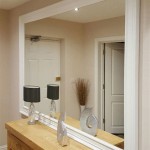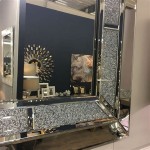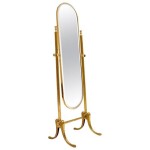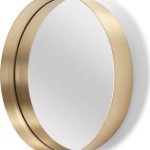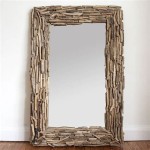Essential Aspects of Convex Mirrors: Why They Only Produce Virtual Images
Convex mirrors are a common sight in many different settings, such as in side mirrors of vehicles, security cameras, and even as decorative elements in homes and businesses. Unlike their concave counterparts, convex mirrors have a unique property: they can only produce virtual images. Understanding why this happens is essential for comprehending the behavior of light and its interaction with mirrors.
To begin, it's important to understand the basic principles of reflection. When light strikes a surface, it can be either absorbed, transmitted, or reflected. In the case of mirrors, light is reflected, meaning it bounces off the surface and changes direction. The angle at which light strikes a surface is equal to the angle at which it reflects. This principle is known as the law of reflection.
Convex mirrors have a curved surface that bulges outward. When light strikes a convex mirror, it reflects off the surface and diverges, meaning it spreads out in different directions. This is because the normal (a line perpendicular to the surface) at any point on a convex mirror is always pointing away from the center of curvature. As a result, the reflected rays never converge, and no real image can be formed. Instead, the rays appear to originate from a point behind the mirror, creating a virtual image.
Virtual images have several key characteristics. Firstly, they cannot be projected onto a screen or captured on film. This is because the rays of light that appear to come from the virtual image actually diverge and never actually intersect. Secondly, virtual images are always upright and located behind the mirror. This is because the rays of light are reflected away from the mirror's surface, giving the impression that the object is behind the mirror.
The ability of convex mirrors to only produce virtual images has practical applications. For example, they are used in side mirrors of vehicles because they provide a wider field of view compared to flat mirrors. This allows drivers to see more of their surroundings and reduces blind spots. Additionally, convex mirrors are often used in security cameras because they provide a wider angle of coverage and can monitor a larger area.
In summary, convex mirrors can only produce virtual images due to their outward-curving surface. This means that light rays reflected from a convex mirror diverge, creating an image that appears to be behind the mirror. Virtual images are upright, cannot be projected, and are always located behind the mirror's surface. Understanding these principles is essential for comprehending the behavior of light and its interaction with mirrors.
Can A Convex Mirror Form Magnified Image Quora
Can A Convex Mirror Produce Real Image When The Object Is Virtual And Vice Versa Concave If Yes How Will It Be Possible Why Quora

Can A Convex Mirror Produce Real Image When The Object Is Virtual And Vice Versa Concave If Yes How Will It Be Possible Why Quora
Why Do Convex Mirrors Always Form A Virtual Image Quora

Real Image Wikipedia

Convex Mirror Image Formation Conditions Ray Diagram Uses

Fundamental Optics Part 1 Curved Mirrors Circuit Cellar

Difference Between Real Image And Virtual

Concave Mirrors And Convex Ray Diagrams Image Formation Examples
Why Does A Convex Mirror Form Small Image Quora


